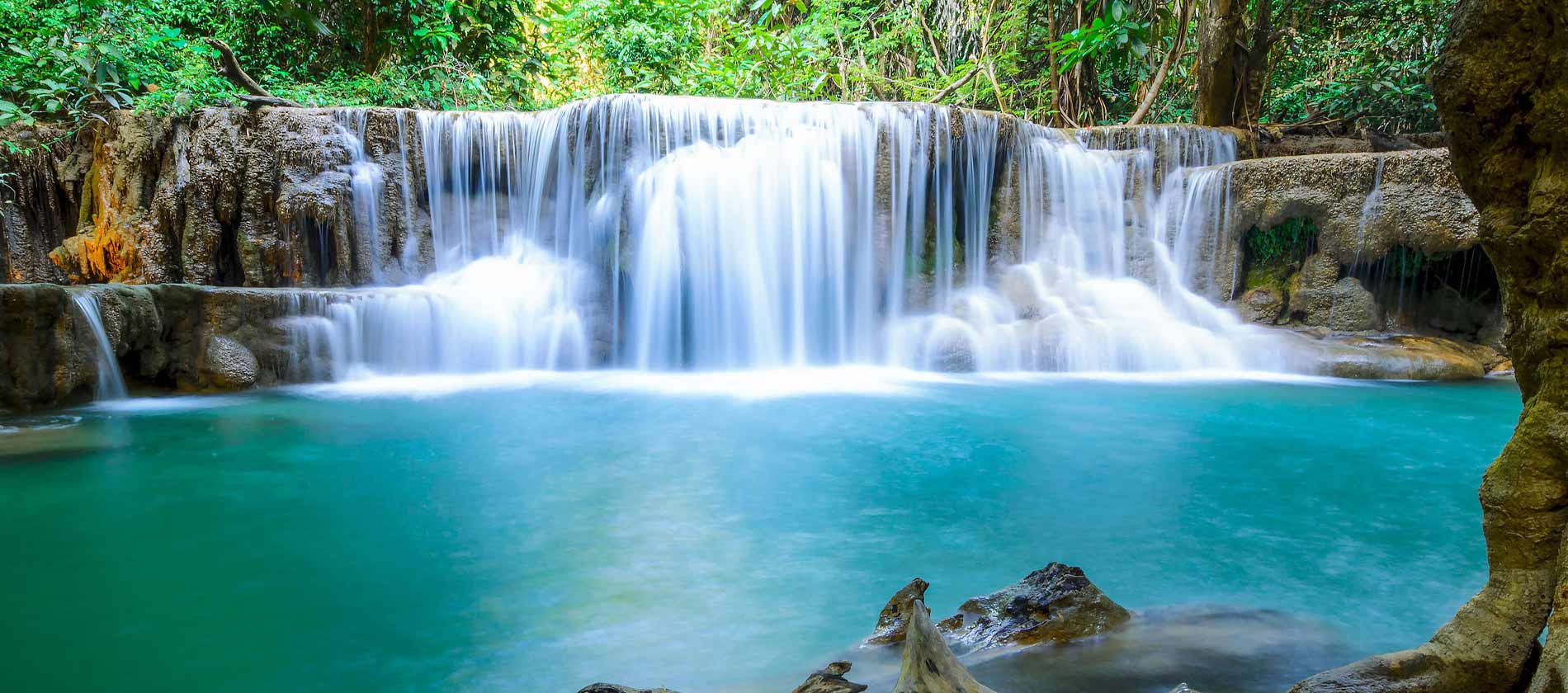Escape the City: 15 Easy Day Trips from Bangkok, Thailand
If you’re planning of your next trip to Thailand, there is no doubt that Bangkok will be high on your list of places to visit and perhaps you are looking to explore the day trips, overnight, or weekend excursions, near Bangkok.
Many first-time travelers miss the wealth of fun, day trips just outside Bangkok. Khao Yai National park, Ayutthaya, Damnoen Saduak floating market, river kwai, an overnight trip to beach city of Pattaya and many more that offer a completely different experience. Join me as we discover 15 best day trips from Bangkok, Thailand.

Day Trips from Bangkok - Overnight travel & Weekend away
Bangkok welcomes over 20 million travellers each year, adding to its already bustling streets. Yet only hours away are leafy lands devoid of urban sprawl, ancient 14th-century settlements, and WWII relics. Escape the city’s frenetic sois (side streets) with these ace overnight travel and weekend away with some of teh fun day trips from the Thai capital, Bangkok.
1. Bang Krachao: perfect day trip for cycle enthusiasts
Travel time: 30 minutes
Although part of Bangkok, Bang Krachao – known as the capital’s green lung – stands in stark contrast to the city’s chaotic energy along the Chao Phraya River. This underdeveloped area offers a peaceful escape from the bustling metropolis. Here, you can visit the floating weekend market at Bang Nam Pheung, explore 250-year-old temples, and stay overnight at an eco-resort where you can sleep in a tree house. Bang Krachao makes the perfect destination for day trips or weekend trips from Bangkok, offering a refreshing break from the city.
How to get to Bang Krachao: Long boats make the five-minute river crossing to Bang Krachao from Wat Klongtoey Pier in the southeast of the city. Once on the island, bike hire can be found at either pier for around 120 baht/day.
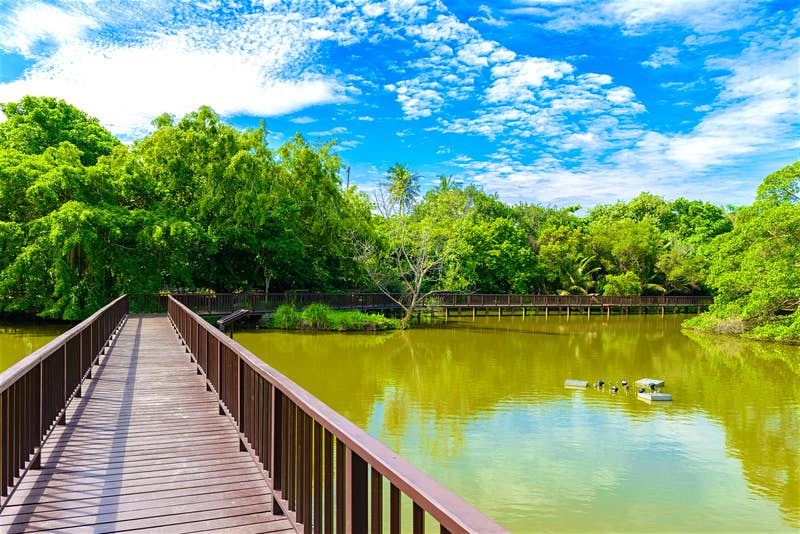
2. Wander around the old capital of Ayuthaya
Before Bangkok claimed the capital crown, Ayuthaya held the title during the Siam kingdom. Founded in 1350, Ayuthaya once boasted 400 temples and palaces, many adorned with gold leaf designs, until the Burmese sacked the city in 1767. Today, its ruins offer a glimpse into its past glory and rival Cambodia’s Angkor Wat for sightseeing.
Best way to get to Ayuthaya: Trains depart hourly from Bangkok Hua Lamphong Station to Ayutthaya Station, taking about two hours. Alternatively, minivans leave regularly from Bangkok’s Victory Monument, with a journey time of one hour.
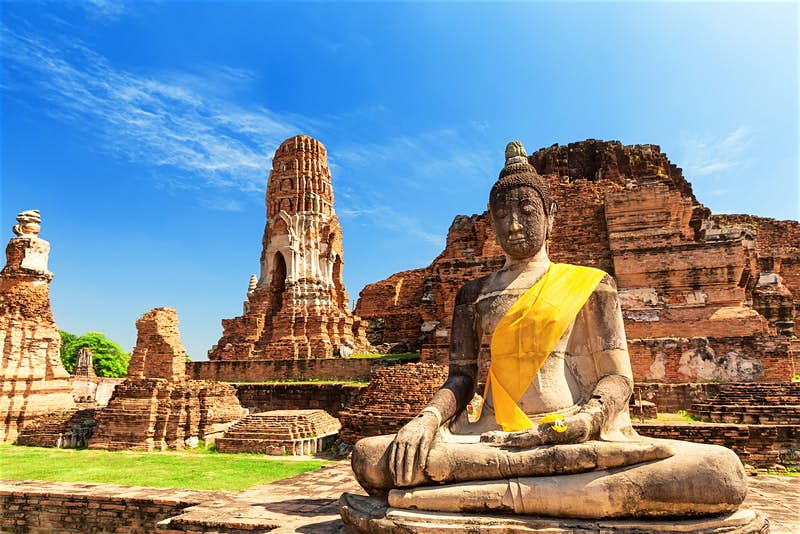
3. Uncover WWII history in Kanchanaburi
Travel time: ~ 3 hours
Kanchanaburi’s dark history has shaped its present-day appeal among travelers. The region is home to the infamous Death Railway Bridge, constructed by Allied prisoners during WWII and made famous by Pierre Boulle’s novel “The Bridge Over the River Kwai”, as well as its Hollywood adaptation. Visitors can explore the town’s fascinating war museums, including the JEATH War Museum, which displays photos, paintings, and relics, such as an unexploded Allied bomb, from that era. The area also features solemn cemeteries that offer a deeper understanding of the harrowing historical events that unfolded here.
How to get to Kanchanaburi from Bangkok: Trains depart twice daily from Bangkok Thonburi Station to Kanchanaburi, taking less than three hours. Alternatively, minivans leave regularly from Victory Monument and typically offer a quicker journey (around two hours 30 minutes).
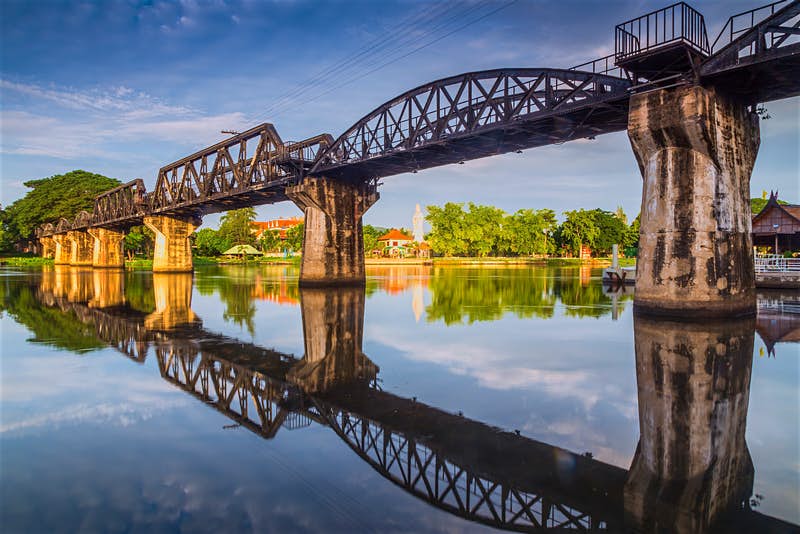
Discover Thailand in the way that suits you best. See the highlights on a Classic Tour, immerse yourself on a Discovery Tour, enjoy comfort and style on a Deluxe Tour, or explore your own way on a Private Tour or Independent itinerary. check out Thailand Tours & Holiday
4. See artisans at work on Ko Kret
Travel time from Bangkok:~ 1 hour
The area is famous for its handmade terracotta pots, and you can visit workshops to buy items directly from local artisans who still use techniques passed down through generations. Renting a bicycle or hopping on a moto taxi offers the best way to explore sites like Wat Poramai Yikawat, the grandest temple complex on the island.
How to get to Ko Kret: It lies north of central Bangkok. The easiest way to reach it is by taxi or bus 166 from Victory Monument to Wat Sanam Neua in Pak Kret, where you can catch a cross-river ferry. Alternatively, charter a longtail river taxi from Nonthaburi, the northern terminus of the Chao Phraya Express riverboat. The journey from Saphan Taksin (Central Pier) to Nonthaburi Pier takes about 40 minutes.

5. Day trip to Nakhon Pathom
Travel time from Bangkok: ~ 1 hour
Nakhon Pathom offers a taste of Thai life, far from the touristy activities of the Bangkok. This laid-back city attracts mainly locals, with its city center filled with markets, including vibrant night markets serving delicious street food.
How to get to Nakhon Pathom: Trains heading to southern Thailand from Bangkok stop in Nakhon Pathom, and commuter trains also run from Thonburi Station. Regular buses depart from Bangkok’s southern bus terminal as well.
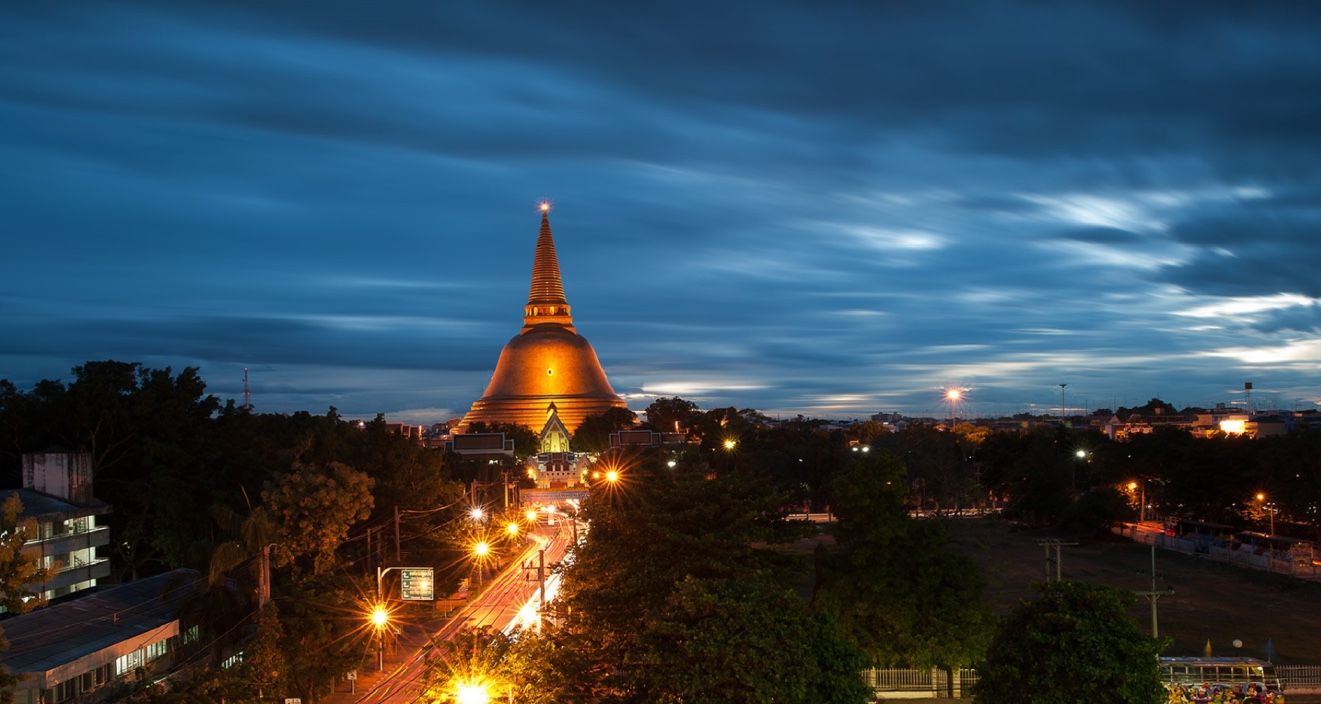
6. Pattaya beach - closes to Bangkok
Travel time: Less than 3 hours
Is Pattaya worth visiting? It depends on who you ask. For some, it’s the ideal weekend trip from Bangkok, offering a convenient beach resort with plenty of fun things to do for all ages. Families can enjoy water parks, a zipline course, great hotels.
Others may be put off by Pattaya’s touristy atmosphere and remnants of its sex industry, which have been part of its identity since off-duty American GIs first came here in the 1960s.
Pattaya boasts some decent beaches, such as Naklua to the north and Jomtien to the south, perfect for a quick dip after the sweltering heat of Bangkok. Night owls will also find a range of non-seedy bars, including the live music venue Hot Tuna, along with plenty of nightclubs. It’s one of the closest beaches to Bangkok for a quick getaway.
How to get to Pattaya: Several companies run direct buses and minibuses to Pattaya, with departures from the Makkasan Airport Rail Link Station on New Petchaburi Rd in Bangkok.

7. Hua Hin beach - best forweekend beach trip from Bangkok
Travel time: ~ 3h30 mnutes
Thailand’s best beach resort, Hua Hin, offers the perfect blend of city and sea, making it one of the best weekend trips from Bangkok. With lively markets, top-notch golf courses, water parks, and an increasingly cosmopolitan atmosphere, Hua Hin delivers a relaxed vibe that stands apart from more famous beach destinations. Many visitors never even step foot on the sand, choosing instead to enjoy the town’s charming streets, shops, and excellent food. Check out best beaches in Thailand
Originally a fishing village, Hua Hin became popular in the 1920s as a resort town for Bangkok’s nobility. Kings Rama VI and Rama VII built summer palaces here, and today, Hua Hin continues to attract a mix of locals and tourists from all walks of life.
Within 3 hours car ride from Bangkok, Hua Hin is one of the best beaches near Bangkok for a weekend getaway. While many day-trippers opt to stay overnight, the town has a variety of accommodations that cater to both budget travelers and those looking for luxury. Hua Hin also offers a fantastic selection of affordable seafood, with many local restaurants serving fresh, high-quality dishes.
How to get to Hua Hin from Bangkok: You can reach the 220km distance from Bangkok by car in just under three hours or by bus in about four hours. Direct trains run between Bangkok’s Krung Thep Aphiwat Central Terminal and Hua Hin, taking around four hours.

8. Khao Yai National Park
Travel time form Bangkok: ~3 hours
Khao Yai National Park (Entrance fee: 400B; 6am-9pm) ranks among the world’s greatest parks. As Thailand’s oldest and most visited reserve, it spans 2,168 sq km and contains one of the largest remaining intact monsoon forests in mainland Asia. This unique ecosystem earned it a UNESCO World Heritage site designation. The friendly and helpful staff at the visitor center (8:30am-4:30pm) speak mostly English and are ready to assist you.
Rising to 1,351 meters at the summit of Khao Rom, the park’s terrain spans five distinct vegetation zones: evergreen rainforest (100m to 400m), semi-evergreen rainforest (400m to 900m), mixed deciduous forest (northern slopes at 400m to 600m), hill evergreen forest (over 1,000m), and savannah and secondary-growth forest in areas once impacted by agriculture and logging before the park’s protection.
Many orchids bloom from mid-June to the end of July, offering one of the few highlights of rainy-season excursions. Khao Yai is an ideal destination for day trips from Bangkok, with its diverse landscapes and seasonal beauty making it a perfect getaway for nature lovers.
The park has two primary entrances. The first is the northern entrance through Nakhon Ratchasima Province, with accommodation and transport options available from the backpacker town of Pak Chong. The second is the southern entrance in Prachinburi Province, which is closer to Bangkok and a popular weekend destination for locals.
How to get to Khao Yai: From Bangkok, take a bus from the Northern bus terminal to Pak Chong. Buses from Khorat to Bangkok also stop in Pak Chong. Trains from Bangkok, Ayutthaya, or Khorat also go to Pak Chong, but they’re slower than the bus.
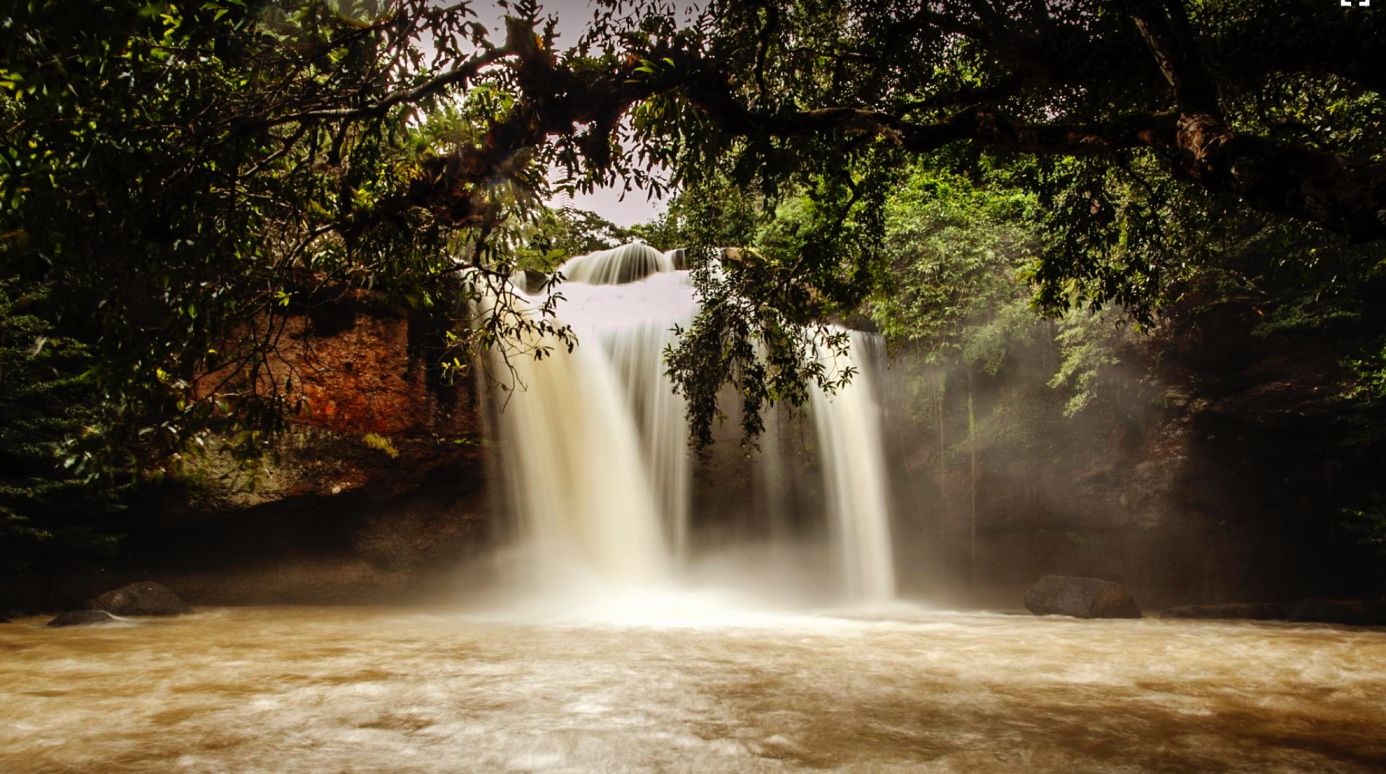
9. Mueang Boran ancient city
ravel time from Bangkok: ~1 hour
Located not that far from the Bangkok, Mueang Boran is a must-visit if you’re into history of Thailand. Known as the “Ancient City,” it houses the world’s largest open-air museum, featuring replicas of Thailand’s temple ruins, ancient palaces, and statues that showcase the country’s rich history. Plan a day trip to explore Thailand’s history in miniature! For a more complete experience, pair your visit to the Ancient City with a stop at the Erawan Museum for an unforgettable excursion from Bangkok.
How to get to Mueang Boran from Bangkok: ; Take a bus 511 and or take MRT & Songthaew: This is the most convenient and affordable way to get to Mueang Boran. Take the MRT on the light green line (BTS Skytrain) to the last station at Kheha. Get down at Exit No.1 or 3.
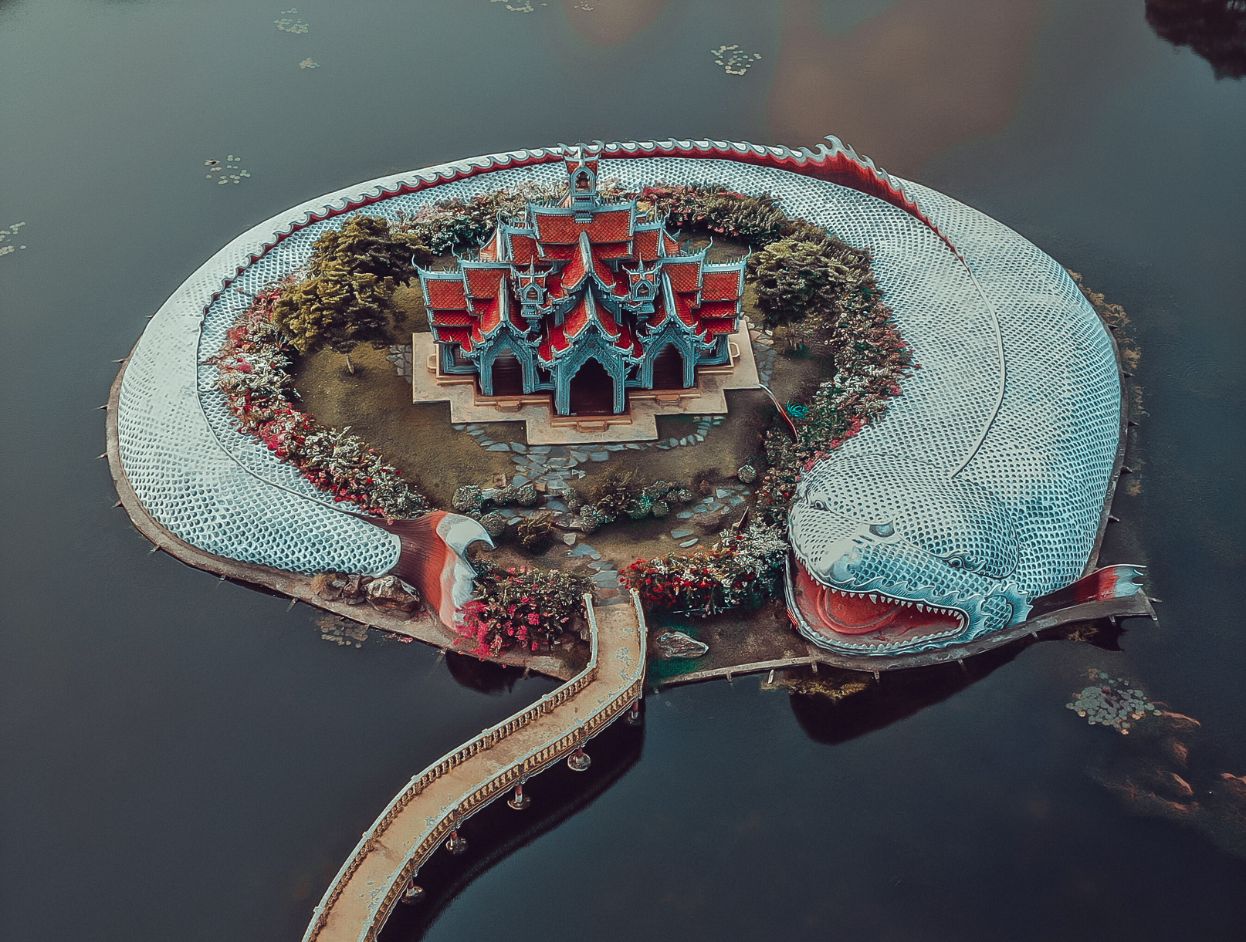
10. Dream World Bangkok
Travel time from Bangkok: ~ 2 hours with bus
This is an amusement park in Bueng Yitho, opens daily from 10AM to 5PM and if you are traveling with kids, you should not miss the fun Dream World Bangkok for an exciting day trip with kids. This fun-filled theme park offers a European-style fantasy land, complete with Space Mountain, Snow Land, Viking ships, and more. Dream World delivers fun for both adults and kids, making it one of the best excursions for families. Think of it as Thailand’s version of Disneyland!
How to get to Dream World Bangkok: The best way to reach Dream World Bangkok by bus is to take BMTA bus 538, which starts at Victory Monument and travels to Dream World. The journey takes approximately 2 hours. An alternative option is to tae BMTA bus 188 from Mo Chit station or Chatuchak Park station, which takes approximately 90 minutes.
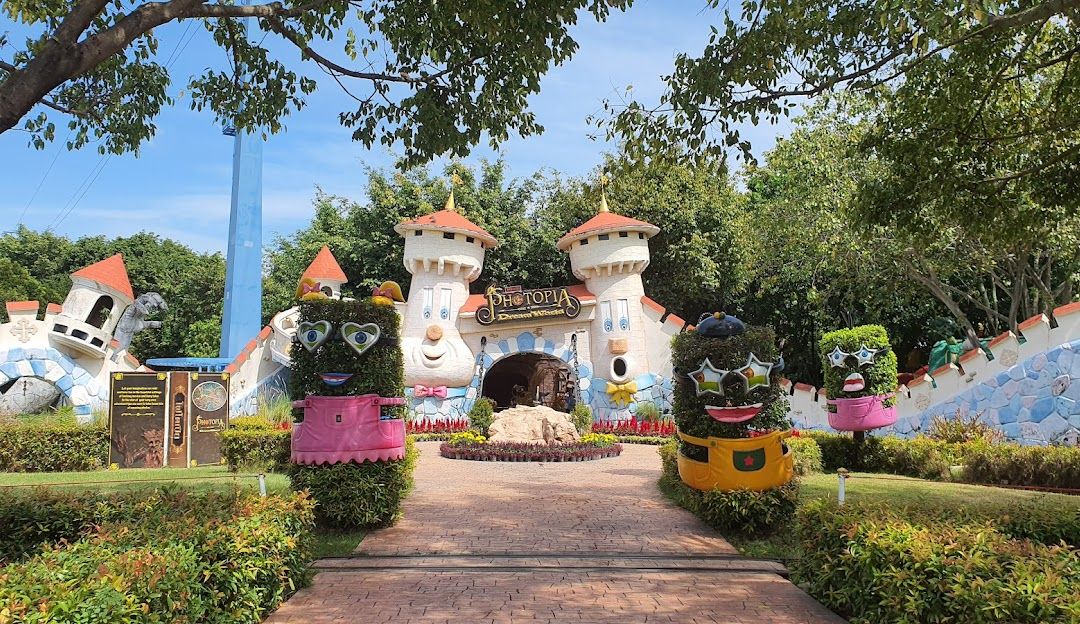
11. Nakhon Pathom
Trave time: ~ 1 hour
Nakhon Pathom, known as the oldest city in Thailand, once the center of the Dvaravati kingdom, Nakhon Pathom was a key hub for a collection of Mon city-states that thrived between the 6th and 11th centuries AD in the Mae Nam Chao Phraya valley. Some historians suggest that the area may have been inhabited even before India’s Asokan period (3rd century BC), with a theory that Buddhist missionaries from India visited Nakhon Pathom during that time.
How to get to Nakhon Pathom from Bangkok: Located within 50 kilometers from Bangkok, the best ways to get there is to take a bus or train. Buses leave Bangkok’s southern bus terminal every 10 to 15 minutes, and take about one hour depending on traffic.
12: Nonthaburi; an easy day trip from Bangkok
Travel time: ~45 min or less
Your search for an easy day trip ends here, take a short drive trip from Bangkok to Nonthaburi, just half an hour away and one of the must-visit destinations outside the capital. This charming province, a hidden gem for travelers, offers a variety of attractions. You can explore a sprawling night market, stroll through a tranquil garden with giant lily pads, enjoy Royal Thai cuisine at local restaurants, and much more. Best of all, Nonthaburi is easy to reach—just a 30-minute drive from downtown Bangkok or a one-hour boat ride.
13: Damnoen Saduak Floating Market
Traveling time from Bangkok: 1 hours 30 minute
This century’s old floating market, topped up with groups of tourists coming to visit what is like the most popular day trip option from Bangkok city. It’s a highly commercialized experience as visitors must hire a boat (800B per person or 3000B per boat) to navigate through the narrow canals, stopping at nearly every stall selling cheap trinkets at what is like to be a high prices it’s.
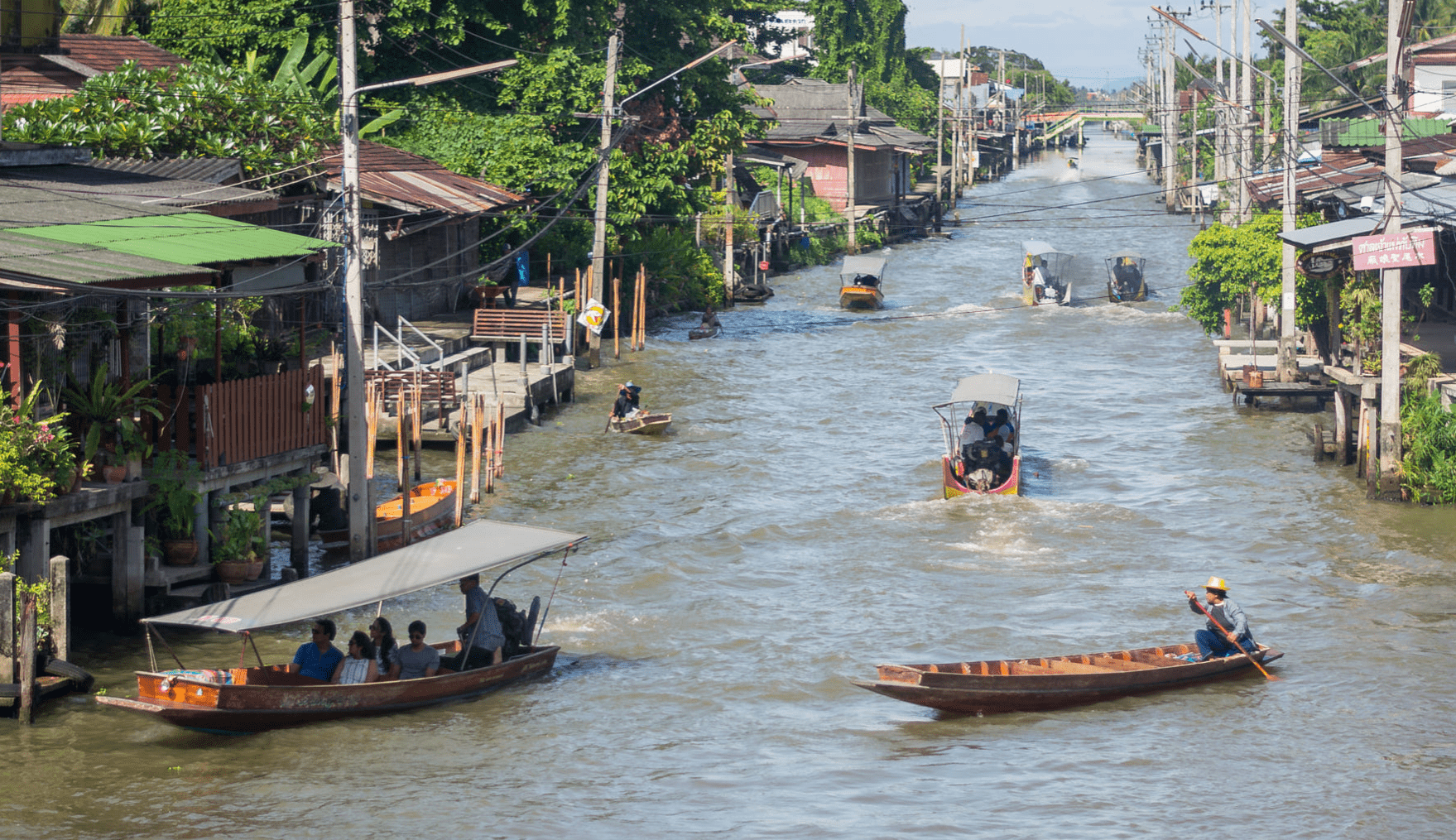
14: Wat Saman Rattanaram
An easy day trip to Wat Saman Rattanaram offers you an outlook intoThai culture to visit massive statues from different religions, Wat Saman Rattanaram makes for a perfect excursion from Bangkok. The temple features a giant 16-meter-high statue of the Hindu deity Ganesha, bright pink and towering over the landscape. Facing the river, you’ll also find a statue of Guanyin, the Goddess of Mercy, positioned in front of an ornate temple. It’s an easy day trip / excursion for anyone looking to explore unique cultural landmarks from Bangkok.
15: Erawan National Park
Travel time from Bangkok: ~3 hours
Erawan National Park in Kanchanaburi spans 550 sq km and is known for its breathtaking seven-tiered waterfall, which flows into Mae Nam Khwae Yai. Hike 2 km to reach the top where the highest waterfall resembles Erawan, the three-headed elephant from Hindu mythology. Established in 1975, the park also features caves and wildlife, including wild elephants, gibbons, and deer (though sightings are rare).
The main highlight of the park is Erawan Falls, with crystal-clear pools at each level. Mee Cave, although difficult to reach, contains five galleries and was once home to bears. Ta Duang Cave is famous for ancient cave paintings, while Rua Cave holds coffins, indicating early human habitation. Pharthat Cave, the easiest to access, stretches for 200 meters. Make sure to take a swimsuit to get cool off in a hot summer days.
Additionally, Erawan National Park is ideal for day trips from Bangkok, most recommended weekend trips, or a motorbike trip from Bangkok’s Trumph Club, all to enjoy nature, wildlife, and history. The park offers accommodations, including wooden bungalows (80-1000 THB) and tents (150 THB), available on-site but not bookable online.
How to get to Erawan national park from Bangkok: The best way is to get to Kanchaabur from Bangkok, then take a bus to the national park. The buses leaves every 15 minutes, from 8AM to 5.30PM, teh bus ticket price (2025) is 80 THB.
